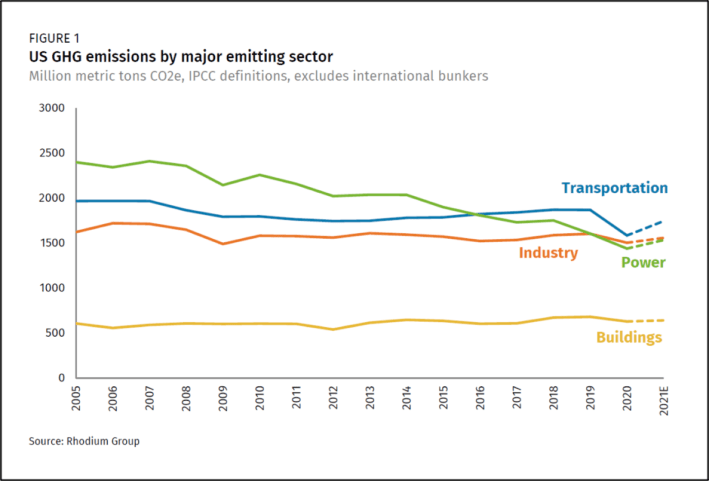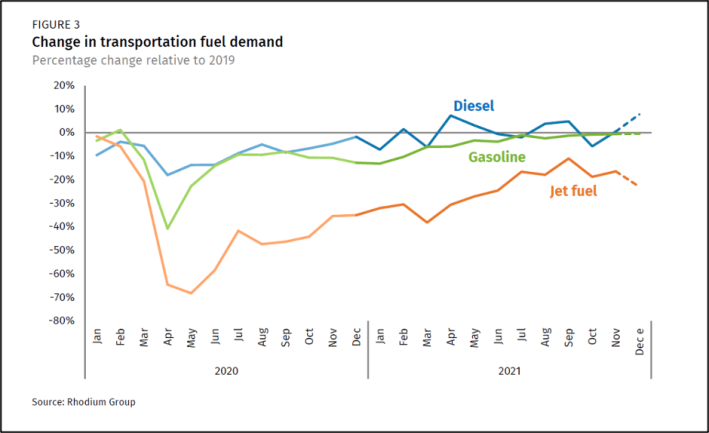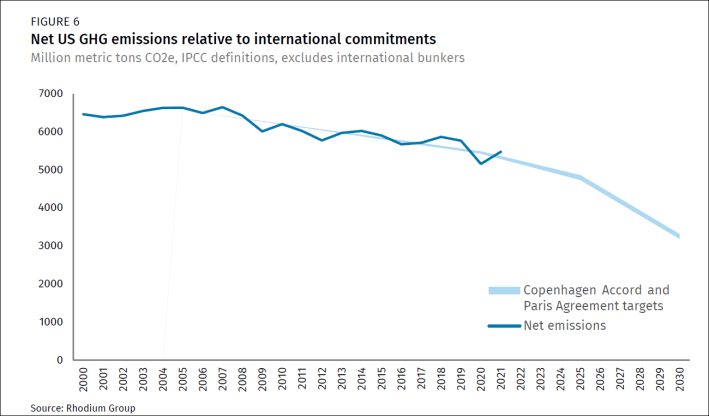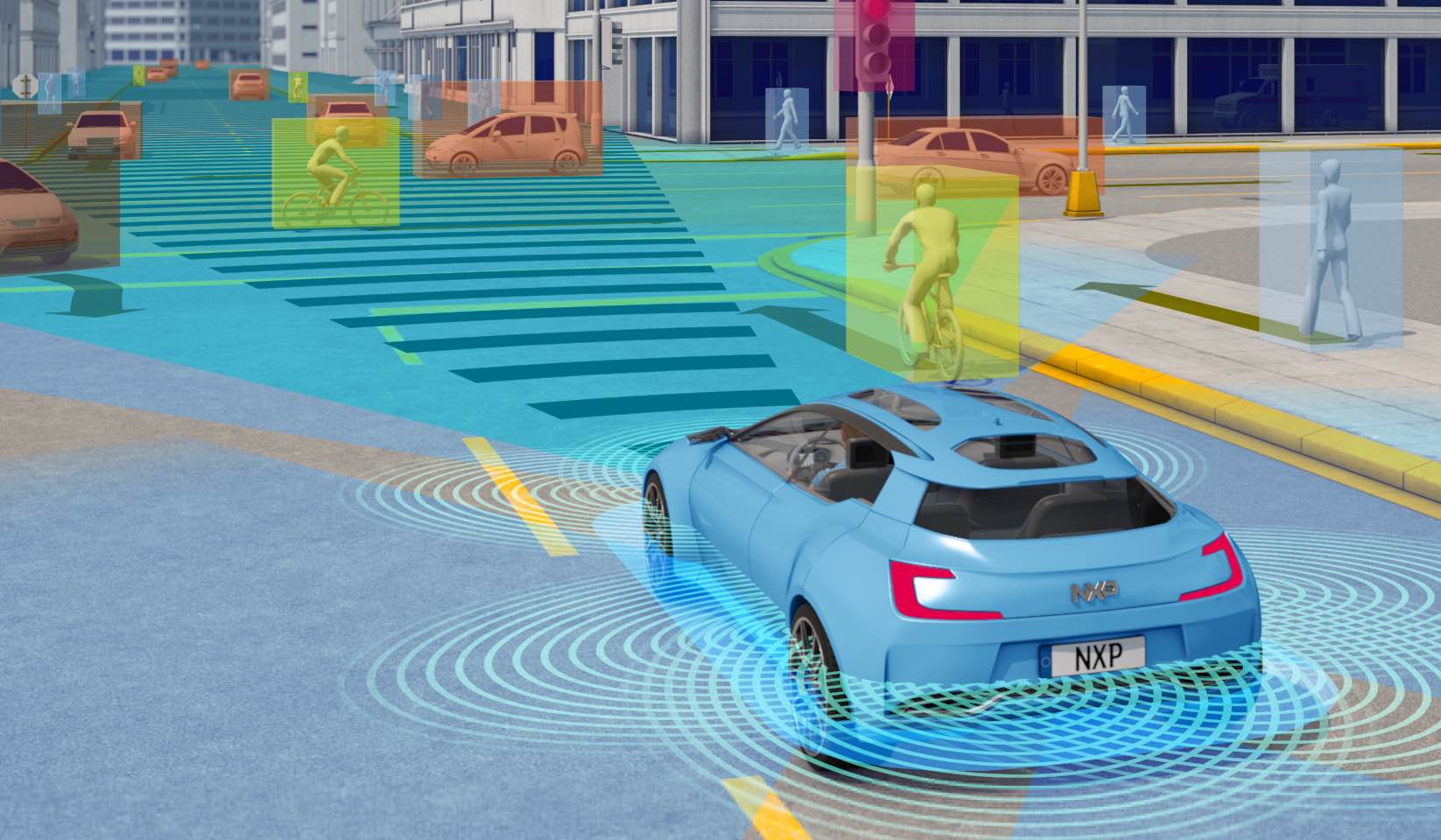U.S. transportation emissions climbed back to two-thirds of pre-pandemic levels during 2021 — and that modest reduction was almost entirely attributable to decreases in air travel rather than decreases in gasoline consumption, a new study finds.
According to preliminary estimates from the Rhodium Group, transport sector emissions shot up 10 percent between the 2020 and 2021, making it once again the country's single largest driver of climate change, despite the fact that travel continued to be suppressed by the pandemic for much of the year. That puts the sector at roughly two-thirds of pre-quarantine levels, even as emissions levels in other areas of the economy rose far more gradually (see chart below).

The authors of the report note that America has now erased most of the progress it made in 2020 towards achieving the critical targets set out under the Paris Agreement, and leaders will now have to act urgently to recapture those gains.
During 2020, U.S. emissions had fallen to 22.2 percent of 2005 levels, taking a promising step towards the national goal of achieving 50 percent of those levels by 2030. But because of the return of so much economic activity in 2021 total emissions are now only 17.4 percent below 2005 levels.
"Joint accelerated action by Congress, the federal executive branch, and leading states can put the 2030 target within reach," the report authors wrote. "But all must act quickly in order to put the U.S. on track."
Just like in years past, some modes of travel contributed to the spike significantly more than others — and drivers, again, were the worst offenders.
By the end of 2021, experts estimate that demand for gasoline — a metric the Rhodium Group says is "indicative of demand for on-road passenger travel" — had nearly climbed to 2019 levels, while diesel demand actually exceeded that year's peak by 0.4 percent, driven by historic consumer demand that pushed the shipping industry to its brink.
Meanwhile, the Federal Highway Administration estimates that by October 2021, the latest month for which data is available, national vehicle miles travelled across all automobile types had reached 95 percent of the totals recorded in the same month two years before. That could suggest that that the cars left on the road were consuming more gasoline per mile than they had pre-pandemic, thanks to a record-breaking surge in light truck sales during late 2020 and early 2021.
Air travel, by contrast, never achieved more than 76 percent of 2019 levels — meaning that much of the transport sector's emissions reductions came from America's skies rather than its roads.

In some ways, what's most surprising about the new climate estimates is that driving emissions didn't go up more — and how few American policymakers are talking about why, or what they can do to accelerate those traffic-suppressing trends in years to come.
As the authors of the Rhodium report note, the emergence of new variants in the second half of last year "led to staggered fuel demand," driven in part by some employers allowing their workers to continue or to return to working from home, even as others resumed their daily car commutes. That staggered demand may have also been amplified by the continued boom in bicycling in many U.S. markets, which began in 2020 partly in response to concerns about the risks of Covid-19 transmission on public transit, and remained strong in 2021 even as the data proved mass modes to be relatively pandemic-safe.
Of course, no one would wish for Covid-19 to continue, regardless of these inadvertent transportation upsides. But some advocates argue that forward-thinking policymakers would be wise to codify workers' rights to skip their car commutes into law whenever possible — or at the very least, require employers to stop incentivizing their employees to drive, by offering cash benefits to those who travel by active and shared modes that are commensurate with the value of their coworkers' parking benefits.
And it's a good idea. https://t.co/SkSaFFCRsx pic.twitter.com/ayjrzE9Bdb
— America Walks (@americawalks) January 10, 2022
Similarly, leaders can do more to increase active transportation mode share without cannibalizing customers from transit agencies, by making streets comprehensively safe for riders and walkers of all ages, abilities and backgrounds, rethinking restrictive land use to put more destinations within easy rolling distance, and expanding access to both electric and acoustic cycles through incentive programs at all levels of government. And of course, making transit a convenient and attractive way to get around by funding it robustly can drive emissions down even more — especially as public perceptions of the viral risks of shared transportation begin to shift.
For now, though, transport sector emissions will likely continue to rise — and motorists will continue to be among the biggest drivers of the surge in years to come.







